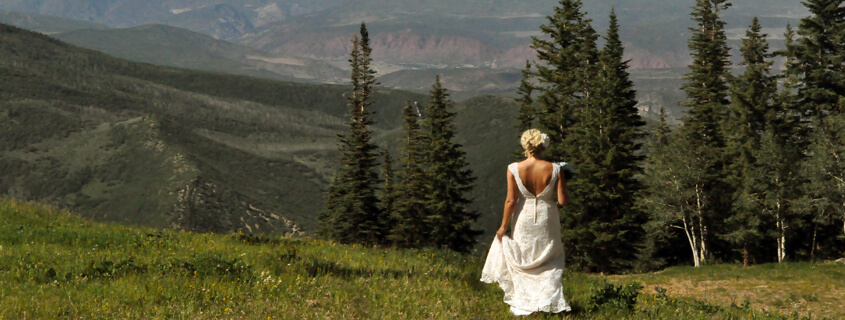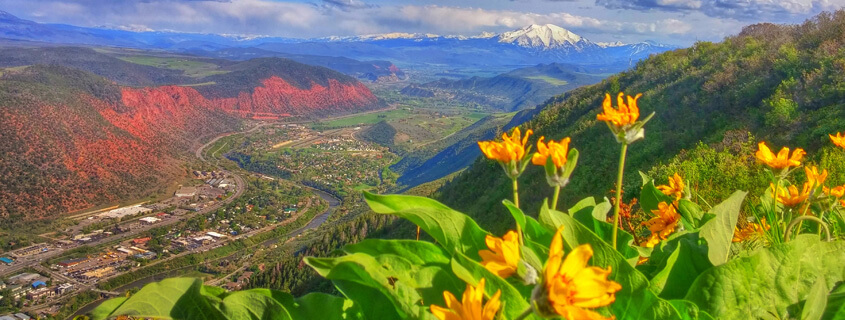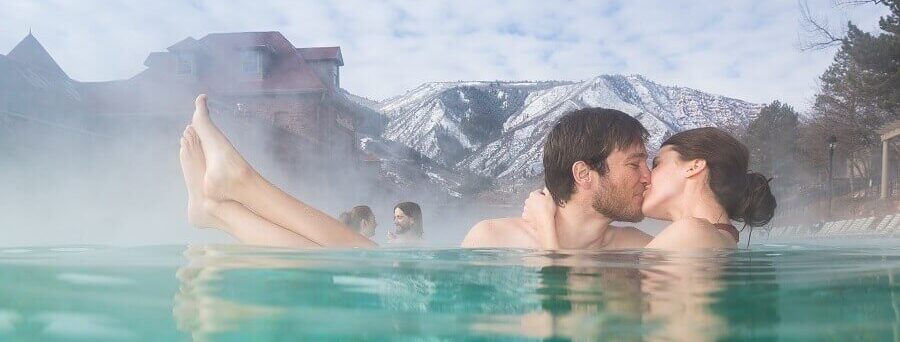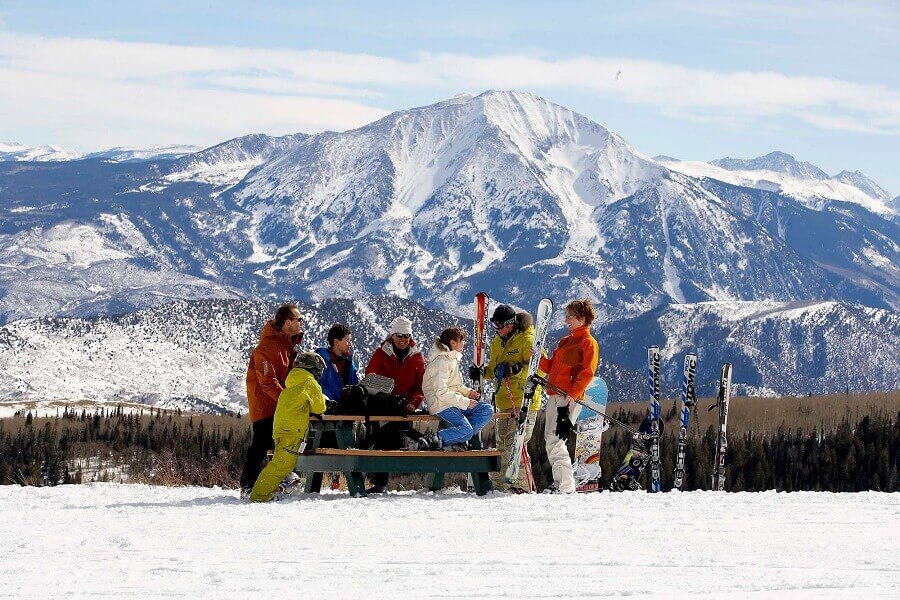If you’ve always wanted to try fly fishing, now is the time to get your feet wet. Glenwood Springs is home to two rivers, the Colorado and Roaring Fork, both teeming with aquatic life. Improve your odds of catching fish with expert advice from local angler and entrepreneur, Allen Gardner.
Fly fishing is a challenging and rewarding sport. To acquire the skills, you’ll need some gear, a bit of knowledge and plenty of practice, which is the fun part! For those new to the sport, it can seem daunting, but with the right equipment, technique and advice, you might not be able to resist the lure of the rivers in Glenwood Springs.
To help navigate the waters, Visit Glenwood Springs touched base with Allen Gardner, a Glenwood Springs local, expert fly fisherman and owner of The Catch and Hatch, a website devoted to teaching anglers all about the sport via online instruction. “We help anglers learn as much as possible about fly fishing so they can catch more fish, increase their understanding of the sport and get the most enjoyment out of every adventure on the river,” Gardner said.
Gearing Up for Fly Fishing
For the beginner, entry into the sport can seem overwhelming, but Gardner assures newbies that even with just basic gear and a little knowledge, catching fish in area rivers is possible. Getting started requires some equipment. To begin, you’ll need a 9-foot, 5- or 6-weight fly rod, reel, weight forward line for easier casting, 9 feet of 4x or 5x leader and tippet ranging in size from 3x to 5x. You’ll also need a selection of flies. A hat to shield you from the sun and polarized sunglasses to reduce glare and protect you from catching a hook in the eye also are recommended.
Gardner’s Three Pillars of Fly Fishing
“Think of fly fishing as an equation,” Gardner said. “Fly Selection + Presentation + Location = Catching Fish! Those are the three pillars of fly fishing.” Let’s break it down a bit.
Fly Selection
There are a wide variety of flies available, each designed to imitate a specific insect. The golden rule of fly selection is to match the hatch. “Having some seasonal insect knowledge will be really helpful,” he explained. “For example, using a giant stonefly in dry fly form is not going to be effective in spring because those bugs won’t hatch until after the runoff. But is there a nymph form of them? You bet, and they’re active right now.”
A nymph is a representation of an insect larva and a prize meal for hungry trout. Nymph flies entice fish beneath the surface. When nymphing, use a strike indicator to alert you when a fish is nibbling. Dry flies represent insects in their adult form and sit on top of the water. If you notice fish rising to the surface, choose a dry fly. To make fly selection easier, Gardner has a Bug ID app that helps anglers identify bugs, and it’s free to download. Otherwise check with local fly shops to see what the fish are biting at any given time.
Presentation
When it comes to the technique of fly fishing, shorten the learning curve with instruction from an experienced fishing guide by taking a fly fishing class or learning from detailed video instruction.
While there are many casting techniques, three essentials to master are the basic roll cast, the water haul cast that prevents your line from tangling, and the sidearm cast for tight spots with overhead trees. Once your fly has been cast into the river, you can use a technique called “stripping,” basically a series of movements to mimic the action of a live insect. The goal is to make the fly look as realistic as possible to entice the fish to strike.
Location
This is one area where anglers have the least control. “You can’t control the flows, the water clarity, the fish counts, anything related to weather. With all these variables, no one can be confident they’re going to catch a fish 100 percent of the time,” Gardner said. “The question to ask is: What can I control? If you get enough variables right, you’ll catch fish every time.”
Fortunately, with two rivers, there’s no shortage of shoreline for fly fishing in and around Glenwood Springs. The Glenwood Canyon Recreation Path offers public access to the Colorado River. While much of the lower Roaring Fork is open to the public, some areas are private and off-limits to fishing. Online apps like on-X for fishing helpfully show the boundaries for private and public river access.
 Go Fly Fishing in Glenwood Springs!
Go Fly Fishing in Glenwood Springs!
Finally, what’s the ultimate key to catching fish in Glenwood Springs? “Get out there and do it,” said Gardner. Get started and learn more about fly fishing, make plans to visit Glenwood Springs today.
Download the official Glenwood Springs Travel Guide

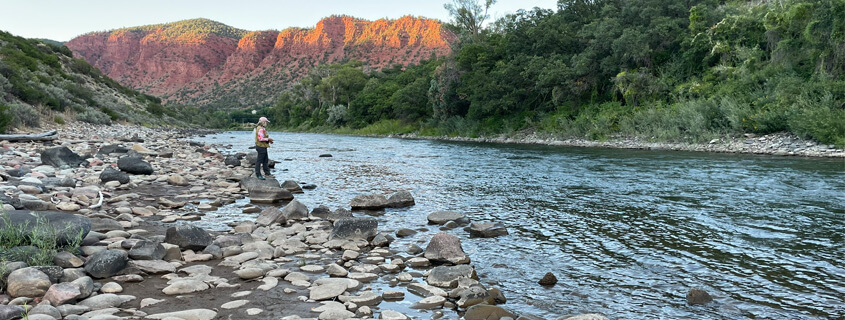
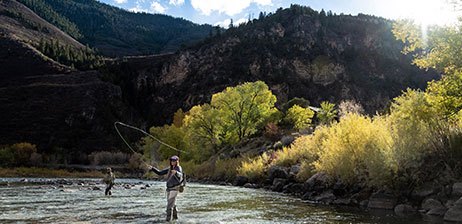
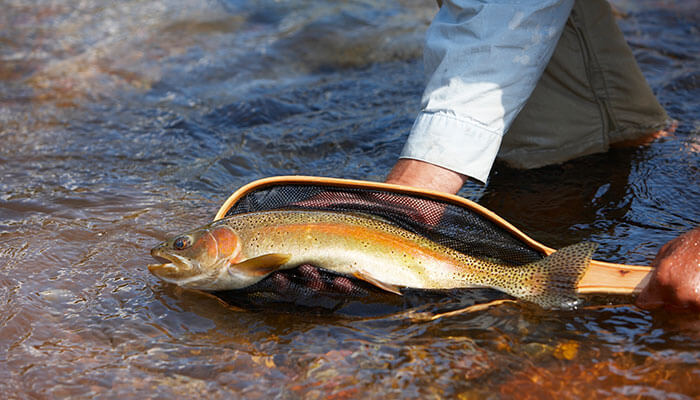 Go Fly Fishing in Glenwood Springs!
Go Fly Fishing in Glenwood Springs!